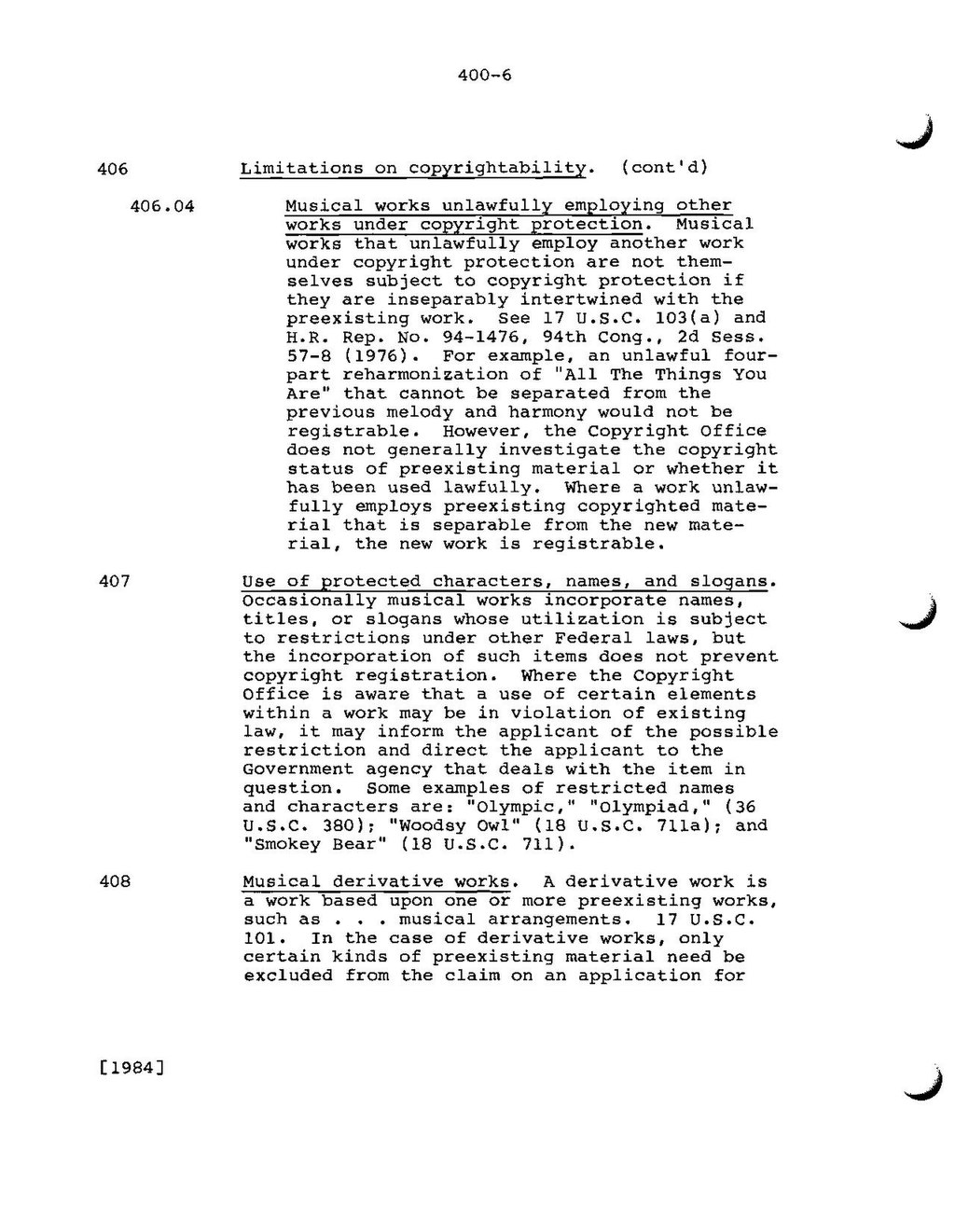400-6
406
Limitations on copyrightability. (cont'd)
406.04
Musical works unlawfully employing other works under copyright protection. Musical works that unlawfully employ another work under copyright protection are not themselves subject to copyright protection if they are inseparably intertwined with the preexisting work. See 17 U.S.C. 103(a) and H.R. Rep. No. 94-1476, 94th Cong., 2d Sess. 57-8 (1976). For example, an unlawful four part reharmonization of "All The Things You Are" that cannot be separated from the previous melody and harmony would not be registrable. However, the Copyright Office does not generally investigate the copyright status of preexisting material or whether it has been used lawfully. Where a work unlawfully employs preexisting copyrighted mate rial that is separable from the new material, the new work is registrable.
407
Use of protected characters, names, and slogans. Occasionally musical works incorporate names, titles, or slogans whose utilization is subject to restrictions under other Federal laws, but the incorporation of such items does not prevent copyright registration. Where the Copyright Office is aware that a use of certain elements within a work may be in violation of existing law, it may inform the applicant of the possible restriction and direct the applicant to the Government agency that deals with the item in question. Some examples of restricted names and characters are: "Olympic," "Olympiad," (36 U.S.C. 380): "Woodsy owl" (18 U.S.C. 711a): and "Smokey Bear" (18 U.S.C. 711).
408
Musical derivative works. A derivative work is a work based upon one or more preexisting works, such as...musical arrangements. 17 U.S.C. 101. In the case of derivative works, only certain kinds of preexisting material need be excluded from the claim on an application for
[1984]
